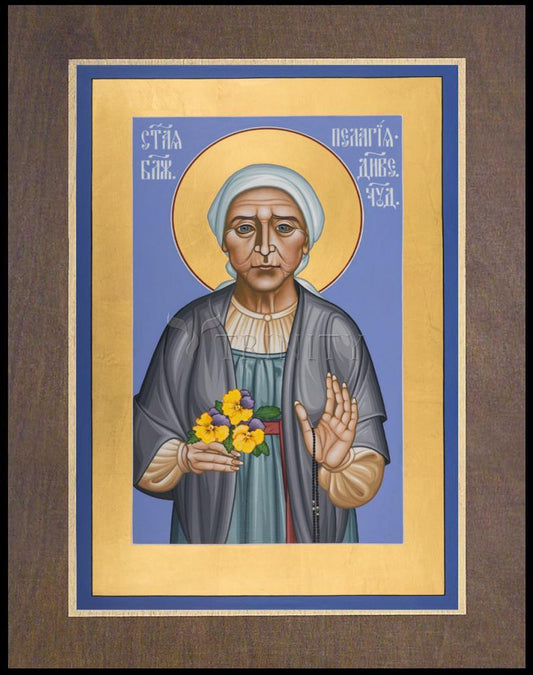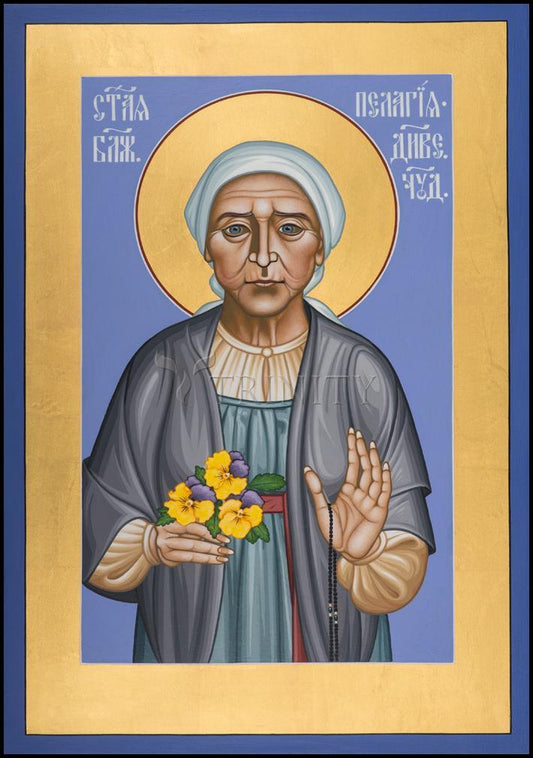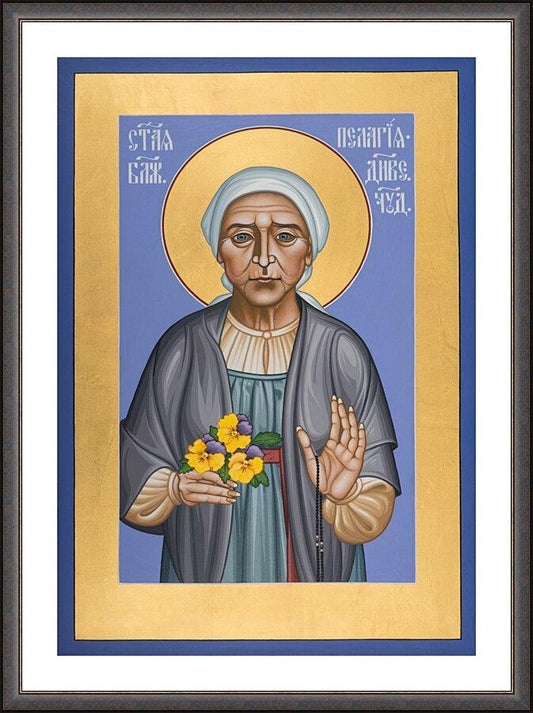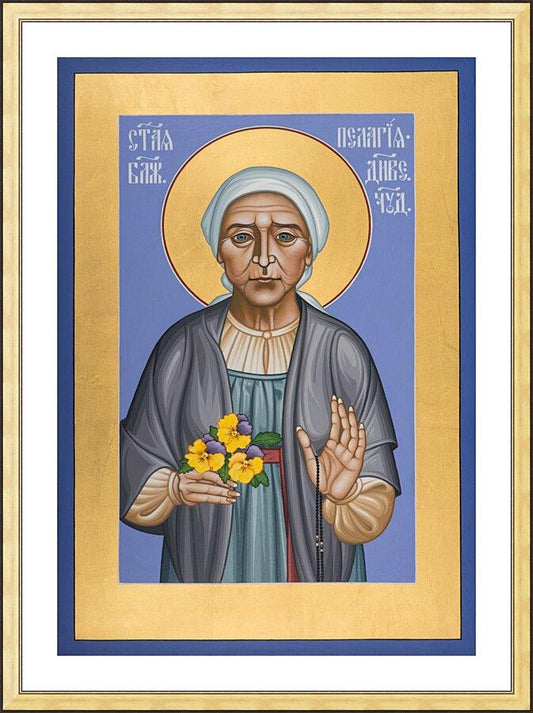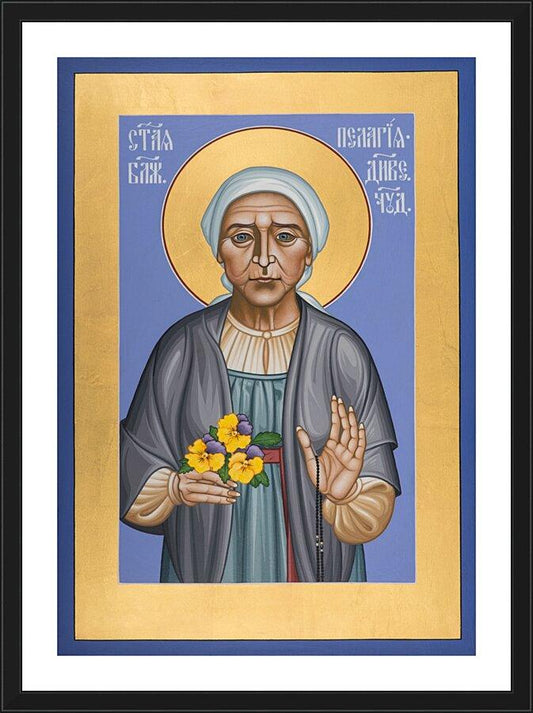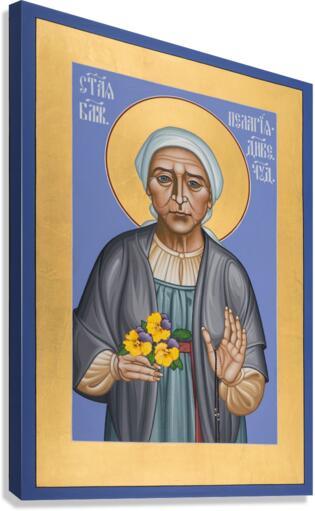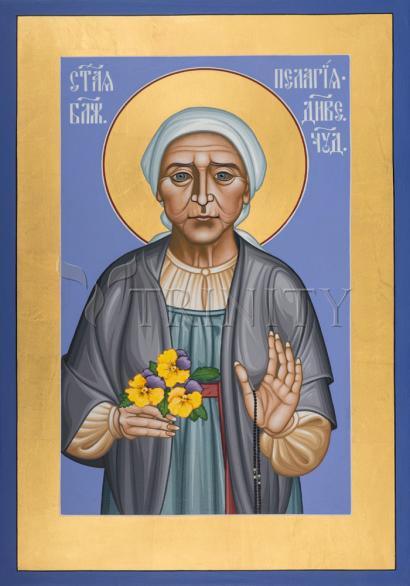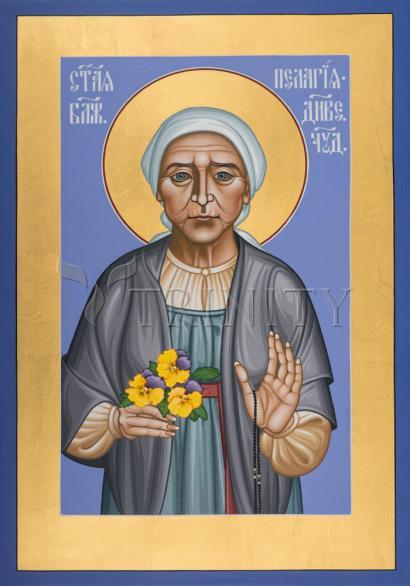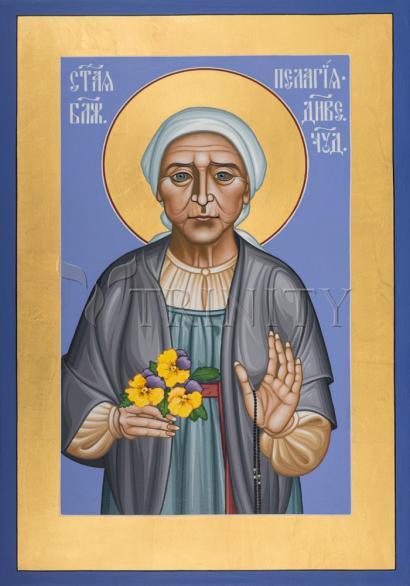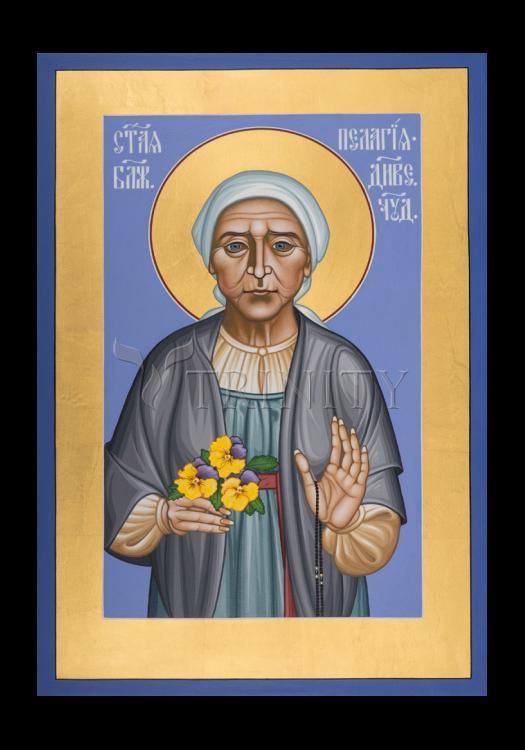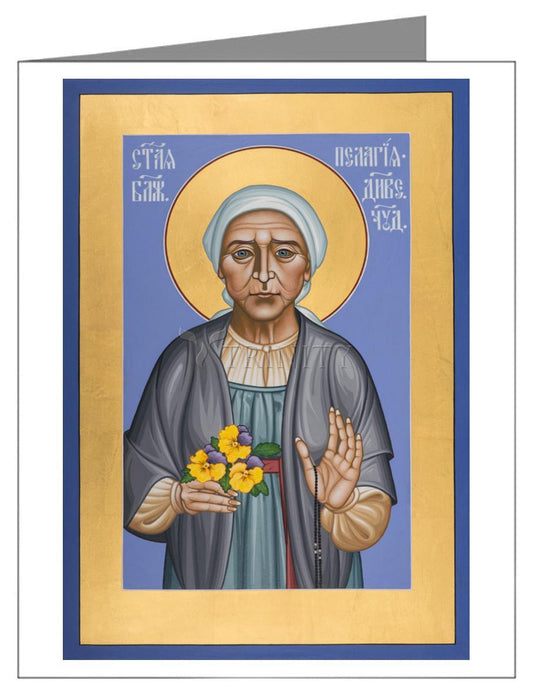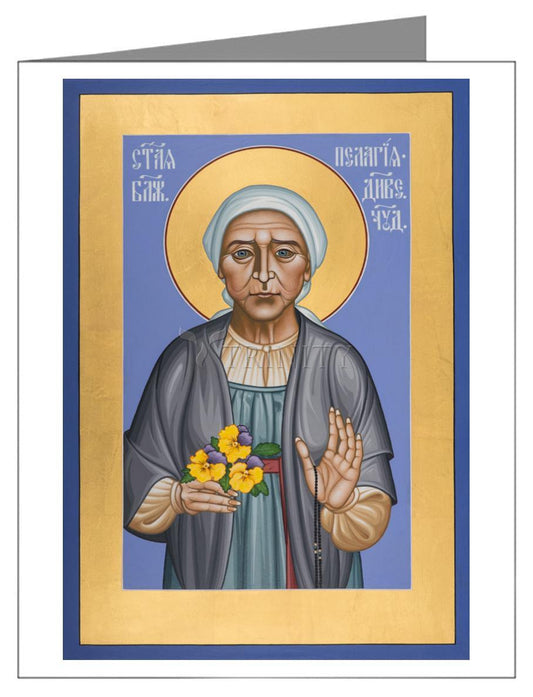St. Pelagia Ivanovna of Diveyevo, fool for Christ's and the disciple of St. Seraphim of Sarov.
Celebrated on January 30 (July 8, when the women saints of Diveyevo are remembered)
As a young married woman she visited St. Seraphim, who conversed privately with her for a long time. On parting, the Elder bowed to her and said, "Go, Matushka, to Diveyevo and defend my orphans. God will glorify you there." And he handed her a prayer rope. As she walked away, a young monk standing outside the elder's cell asked him who she was. "Trust God, Fr. John," replied the Saint, "this woman whom you see will be a great luminary for the whole world"She is Pelagia Ivanovna, from Arzamas."
No one understood her. She was considered to be an ordinary crazy woman and quite unbearable. Gradually, Pelagia Ivanovna began to manifest other spiritual gifts, especially the gift of directing souls. All the sisters came under her spiritual guidance, and she had quite a number of spiritual children among the laity as well. As for the abbess, she did nothing without consulting the blessed one.
During this time there lived in Diveyevo yet another fool-for-Christ, Natalia Dmitrievna "Natashenka".Little is known of her background, other than that she came from a peasant family of the Orenburg province. At first, she too sorely tried the nuns' patience"she would stand by the choir, her head uncovered, and make faces"and she would have been evicted had not Blessed Pelagia appeared in a vision to one of the senior nuns with a paper on which was written in large letters: "Do not touch Natalia; she is assigned to live here!"
Not long before Pelagia Ivanovna died, she saw from her window a woman coming towards her from the convent gates. She shouted at her, shaking her finger threateningly. The woman stopped. "Is it still too early, mother?" she asked. "Early," answered the blessed one. The woman bowed low and left as she had come. She would return periodically for extended visits and, after Pelagia Ivanovna died, she remained there to live. Who was she? Her name in holy baptism was Nadezhda, but everyone knew her as Pasha of Sarov, or Parasceva Ivanovna.
Before her repose on January 30, she was granted to receive the Holy Mysteries from angels, as witnessed by Mother Anna. After her repose, she was seen in a vision, kneeling before the Most Holy Mother of God together with St. Seraphim. Blessed Parasceva Semyonovna called her "a second Seraphim," and she became known as "Seraphim's Seraphim."



